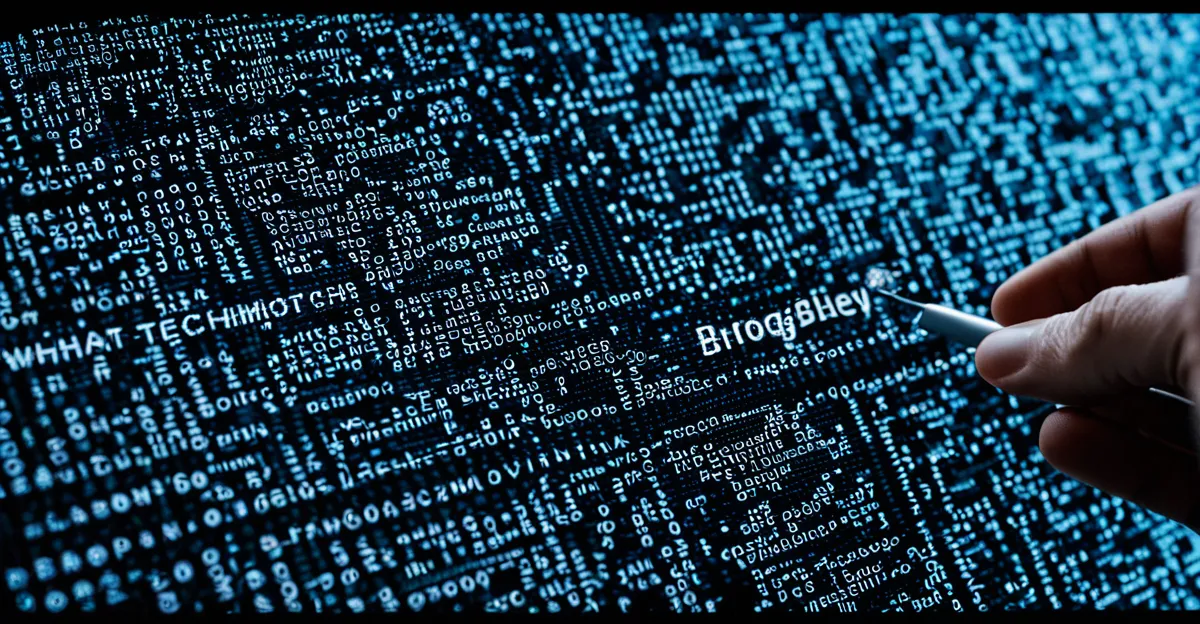Major Regulatory and Compliance Hurdles in UK IoT
Understanding the UK IoT regulations is crucial for businesses navigating the thriving Internet of Things sector. One of the foremost challenges involves the increasing complexity of data protection and privacy laws. These laws demand stringent measures that govern how data is collected, stored, and shared, underscoring the importance of compliance to maintain user trust. Companies must meticulously align their practices with frameworks such as the UK’s version of the General Data Protection Regulation (GDPR), which influences how IoT devices handle personal data.
Post-Brexit regulatory divergence introduces additional layers of complexity. Organizations must now carefully interpret and adapt to the evolving UK-specific requirements that can differ markedly from EU rules. This divergence compels businesses to stay vigilant and proactive in their compliance approaches to avoid penalties and operational disruptions. Furthermore, these shifting regulations often demand ongoing updates to device software and data management practices.
Have you seen this : How is the UK advancing in the field of quantum computing?
The impact of UK government policy on IoT business operations extends beyond just data laws. Policies related to cybersecurity, device safety standards, and cross-border data flows all shape the operational landscape. Consequently, businesses are tasked not only with legal compliance but also with embedding policy considerations into their strategic planning. Staying ahead in this environment requires robust internal governance structures and regular engagement with regulatory developments.
In summary, compliance challenges in UK IoT encompass a complex blend of stringent data protection rules, post-Brexit regulatory shifts, and multifaceted government policies. Successfully navigating this maze is vital to securing a sustainable and competitive foothold in the UK’s dynamic IoT market.
Also read : What Are the Potential Drawbacks of AI-Powered Tools in Education?
Cybersecurity Threats and Data Privacy Concerns
The surge in IoT devices across the UK has intensified IoT cybersecurity challenges, with a notable rise in cyber attacks targeting connected devices. These attacks exploit vulnerabilities inherent in poorly secured endpoints, making IoT ecosystems attractive targets for hackers aiming to access sensitive data or disrupt services. The evolving threat landscape demands stringent measures tailored specifically to IoT architectures, where traditional security models often fall short.
A key aspect of these challenges lies in securing user data within the context of data privacy UK regulations. Companies must ensure that data collected by IoT devices is protected against unauthorized access and misuse. This becomes complicated by the vast amount of real-time, personal, and operational data generated, which refines the attack surface. Compliance with data privacy standards requires comprehensive encryption, continuous monitoring, and vigilant incident response strategies.
To mitigate these risks, several industry best practices have emerged. These include implementing robust authentication protocols, ensuring regular firmware updates, and adopting a zero-trust security model tailored for IoT environments. Recent UK case studies illustrate successful threat mitigation where firms integrated advanced anomaly detection and automated response systems, significantly reducing breach incidents. Proactive cybersecurity frameworks not only protect end users but also reinforce compliance efforts, aligning with evolving IoT cybersecurity challenges and data privacy UK demands.
Interoperability Constraints Among IoT Devices
Interoperability remains a significant device interoperability obstacle in the UK IoT space, largely due to the absence of universal IoT standards. Many IoT devices use proprietary protocols, hindering seamless integration across different manufacturers. This fragmentation creates complexity for businesses attempting to unify diverse systems into cohesive platforms, limiting the scalability and flexibility of IoT solutions.
Communication issues often arise between legacy and modern systems, where older devices may not support contemporary IoT protocols or security requirements. This mismatch results in potential data silos and operational inefficiencies. Companies face the challenge of either upgrading legacy infrastructure—often costly and disruptive—or developing custom middleware solutions that bridge compatibility gaps.
To address these technical barriers, several UK initiatives promote standardisation and encourage the adoption of common frameworks. Collaborative efforts involving industry consortia and government-backed programs aim to harmonize protocols, fostering interoperability that enhances device communication and data exchange. Standards such as those developed by the Open Connectivity Foundation and emerging UK-specific frameworks are pivotal in streamlining device integration, thereby accelerating IoT deployment and innovation in the region.
Skills Shortage and Workforce Limitations in IoT
The IoT skills gap in the UK presents a significant barrier to the growth and innovation of the Internet of Things sector. The demand for professionals with advanced technical expertise—such as embedded systems engineering, data analytics, cybersecurity, and IoT software development—far outstrips the current supply. This shortfall hinders the ability of companies to develop, deploy, and maintain complex IoT solutions effectively.
One critical consequence of the UK tech talent shortage is reduced business competitiveness. Firms often struggle to scale operations or adopt cutting-edge technologies without access to qualified engineers and specialists. Smaller startups, in particular, face challenges competing with larger organizations that can offer more attractive compensation packages or invest in in-house training.
To address these workforce limitations, UK initiatives are focusing on workforce development through expanded education and training opportunities. Universities and vocational programs are increasingly aligning their curricula with industry needs, emphasizing hands-on IoT skills and cross-disciplinary knowledge. Additionally, industry collaborations are promoting apprenticeships, coding bootcamps, and continuous professional development tailored to the dynamic requirements of IoT. These efforts aim to create a sustainable talent pipeline, empowering the UK to maintain its position in the evolving global IoT landscape.
Investment Limitations and Funding Barriers
Investment limitations remain a significant obstacle for the IoT investment UK ecosystem, particularly affecting startups and early-stage companies. Many UK IoT ventures face financial constraints that restrict their ability to scale operations, innovate, and capture market share. Access to capital is critical for developing complex IoT technologies, but funding avenues often fall short of industry needs.
Startups frequently encounter hurdles in attracting sufficient venture capital. Investors may perceive IoT projects as high-risk due to the sector’s technical complexity and long development cycles. This risk aversion limits the available pool of early and growth-stage funding, posing challenges for businesses aiming to bring new IoT solutions to market. Furthermore, the IoT space demands substantial upfront investment in research, hardware, and software integration, exacerbating capital needs.
Government support has played a vital role, yet many companies find it challenging to navigate the application processes or align their projects with available funding programs. Despite this, notable funding initiatives aim to bridge gaps by offering grants and incentives to stimulate innovation. Some high-profile investments in smart city projects and industrial IoT demonstrate the positive impact of targeted financing, reinforcing the potential of the UK IoT market.
In summary, overcoming investment limitations and improving access to diverse funding sources are essential steps for the UK to foster a vibrant IoT ecosystem capable of sustaining long-term growth and global competitiveness.
Infrastructure and Connectivity Challenges
Reliable IoT infrastructure UK is foundational to unlocking the full potential of Internet of Things solutions. Yet, widespread connectivity issues persist across many regions, creating significant barriers to consistent device communication and data transmission. The uneven availability of high-speed broadband limits seamless IoT deployment, especially in rural and underserved areas where infrastructure gaps remain pronounced.
The development of advanced networks such as 5G and fibre optic broadband is pivotal in addressing these hurdles. 5G technology offers ultra-low latency, enhanced bandwidth, and higher device density support, making it ideal for demanding IoT applications like smart cities and industrial automation. Fibre networks provide the backbone for stable and high-capacity data flows essential to IoT ecosystems. However, the rollout of such infrastructure is uneven and often slowed by geographic and financial constraints.
To improve IoT connectivity, the UK government collaborates with private sector stakeholders, investing in initiatives aimed at expanding network coverage and upgrading legacy systems. These efforts are designed to build a robust national framework, enabling businesses and consumers alike to benefit from reliable, scalable IoT networks. Without addressing these connectivity issues, the UK risks limiting the growth and innovation of its IoT market on both domestic and global stages.
Market Competition and Global Positioning
The UK IoT market faces intense competition from established international players dominating the global landscape. These global IoT leaders benefit from extensive research budgets, mature ecosystems, and rapid innovation cycles, placing considerable pressure on UK companies to keep pace. For UK firms, this heightens the challenge of competing on pricing, technological advancement, and speed-to-market.
Maintaining competitiveness requires balancing efficient cost structures with substantial investment in innovation. UK businesses must accelerate development timelines to respond swiftly to shifting market demands and leverage unique strengths such as specialized knowledge or regional regulatory agility. Failure to do so risks losing ground to international rivals with more scalable operations and faster product rollouts.
Strategic initiatives within the UK aim to bolster international competitiveness by fostering collaboration between government, academia, and industry. These efforts emphasize supporting cutting-edge research, expanding export opportunities, and enhancing access to global markets. Additionally, nurturing homegrown talent and encouraging agile development cycles are crucial to sustaining the UK’s position in the increasingly crowded tech industry rivalry.
In summary, to thrive within the competitive global IoT arena, UK stakeholders must pursue integrated strategies combining innovation, policy support, and market agility to distinguish the UK IoT market on the world stage.








